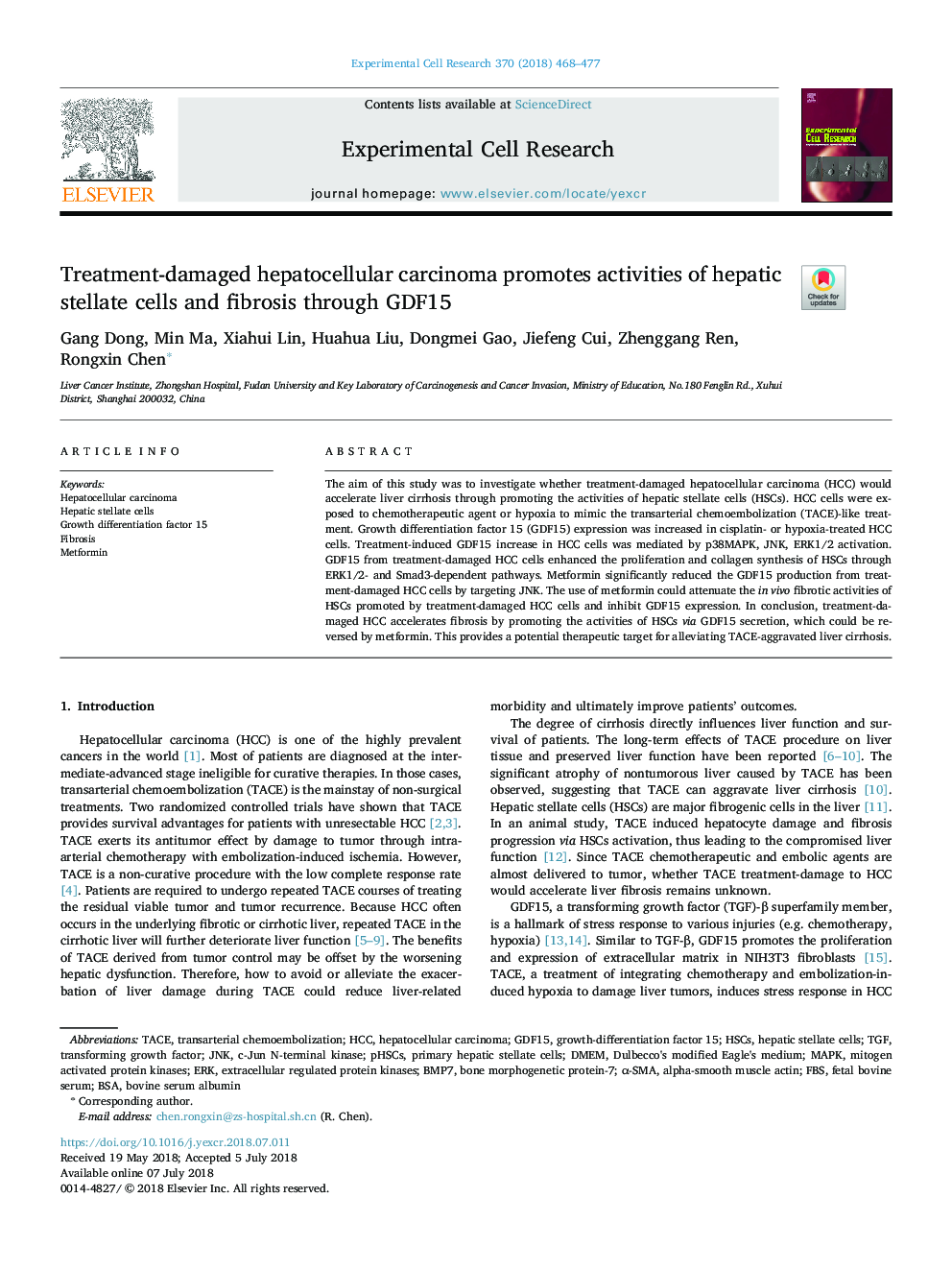| Article ID | Journal | Published Year | Pages | File Type |
|---|---|---|---|---|
| 8949725 | Experimental Cell Research | 2018 | 10 Pages |
Abstract
The aim of this study was to investigate whether treatment-damaged hepatocellular carcinoma (HCC) would accelerate liver cirrhosis through promoting the activities of hepatic stellate cells (HSCs). HCC cells were exposed to chemotherapeutic agent or hypoxia to mimic the transarterial chemoembolization (TACE)-like treatment. Growth differentiation factor 15 (GDF15) expression was increased in cisplatin- or hypoxia-treated HCC cells. Treatment-induced GDF15 increase in HCC cells was mediated by p38MAPK, JNK, ERK1/2 activation. GDF15 from treatment-damaged HCC cells enhanced the proliferation and collagen synthesis of HSCs through ERK1/2- and Smad3-dependent pathways. Metformin significantly reduced the GDF15 production from treatment-damaged HCC cells by targeting JNK. The use of metformin could attenuate the in vivo fibrotic activities of HSCs promoted by treatment-damaged HCC cells and inhibit GDF15 expression. In conclusion, treatment-damaged HCC accelerates fibrosis by promoting the activities of HSCs via GDF15 secretion, which could be reversed by metformin. This provides a potential therapeutic target for alleviating TACE-aggravated liver cirrhosis.
Keywords
GDF15HSCsTACETGFBMP7ERKFBSJnkDMEMα-SMABSAc-Jun N-terminal kinasetransarterial chemoembolizationHCCMAPKDulbecco's modified Eagle's mediumMitogen activated protein kinasesbovine serum albuminAlpha-smooth muscle actintransforming growth factorfetal bovine serumHepatic stellate cellsGrowth differentiation factor 15FibrosisMetforminBone morphogenetic protein-7extracellular regulated protein kinasesHepatocellular carcinoma
Related Topics
Life Sciences
Biochemistry, Genetics and Molecular Biology
Cancer Research
Authors
Gang Dong, Min Ma, Xiahui Lin, Huahua Liu, Dongmei Gao, Jiefeng Cui, Zhenggang Ren, Rongxin Chen,
